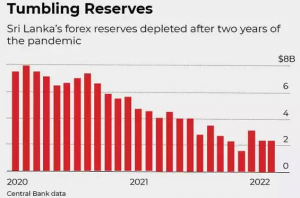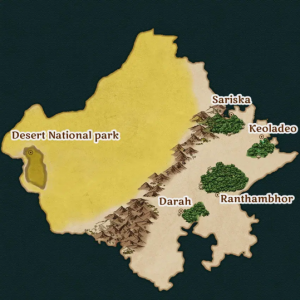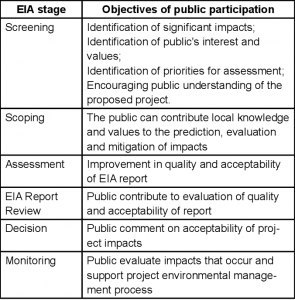THE INTERNATIONAL RELATIONS
1. HOW WILL SRI LANKA OVERCOME ITS DEBT CRISIS?
THE CONTEXT: Recently, Sri Lanka announced its decision to default on its foreign debt of $51 billion, tarnishing its track record of promptly servicing past loans. Citing the International Monetary Fund’s assessment that the country’s debt stock was “unsustainable”.
THE EXPLANATION:
- According to the countries Finance Ministry said its policy of repaying foreign debt on time was “no longer tenable”. It described the default move as its “last resort” to prevent “a further deterioration” of the country’s financial position, and to ensure fair and equitable treatment of all creditors.

- Sri Lanka will hold talks with the International Monetary Fund (IMF) in Washington DC, on a comprehensive debt restructuring programme.
What led to the crisis?
- Sri Lanka is experiencing one of its worst economic crises. For months now, households and businesses have had to cope with severe food and fuel shortages, while the government scrambles for dollars to pay for essential imports. Emergency financial support coming in, including from India, is barely enough to sustain the country for a month.
- With authorities sharing no road map or plan, fears of hunger and starvation are growing, and thousands of people have been voicing their anger against the government. Amid mounting protests, the government took two major decisions recently — to default on the country’s debt and to seek IMF support to restructure outstanding loans and rescue its teetering economy.
Does a debt default help?
- No middle-income country other than Sri Lanka has resorted to a debt default in recent years. Usually, creditors and investors see a defaulting country as less favorable for business. This makes it harder for the country to borrow from external sources. If domestic production is low, as is in Sri Lanka’s case, it is even harder to cope.
- Sri Lanka’s pre-emptive default takes away the pressure of having to repay some $7 billion in debt this year, giving the country some time to stabilize. Further, the default move came just ahead of Colombo’s scheduled talks with the IMF, on the sidelines of the Spring Meetings of the Fund and World Bank, beginning in Washington DC on April 18.
- The IMF is expected to come up with a package that will allow Sri Lanka to restructure its external debt over time. Such a programme, including immediate relief of a couple of billion dollars, will also make Sri Lanka more creditworthy in the international money market.

How is Sri Lanka coping meanwhile?
- Citizens are finding it very difficult to source essentials, including cooking gas and kerosene. Fuel is in short supply and is now being rationed to customers after long periods of waiting in queues.
- Costs of all basic commodities have risen sharply making them unaffordable for most. Colombo is sourcing fuel and food supplies for the month using external help, including credit lines from India.
How could an IMF programme bail out the country?
- The way forward is neither easy nor straightforward for Sri Lanka, even with IMF assistance. Senior Sri Lankan economists have observed that the situation would likely get worse before getting better, and that there could be no gain without pain. Much would depend on the conditions imposed by the IMF and how Sri Lanka responds to them, given the government’s political compulsion to regain lost ground.
- It is widely predicted that the Fund’s recommended reforms would include greater taxation, and a reduction in state spending. What this could mean to the average citizen reeling under the shock of this economic calamity remains to be seen.
- It would be especially challenging for the Rajapaksa regime, which has lost significant political capital in the wake of this crisis, to make and implement tough policy decisions that would be inevitable at this time.
THE ENVIRONMENT, ECOLOGY AND CLIMATE CHANGE
2. THE GREEN AGRICULTURE PROJECT
THE CONTEXT: The Project is funded by the Food and Agriculture Organisation’s (FAO) Global Environment Facility, will act as a lifeline for the Desert National Park (DNP) in western Rajasthan with the conservation of critical biodiversity and forest landscapes.
THE EXPLANATION:
- The environmentalists in the State have called for developing grasslands on vast tracts in the DNP area for grazing of animals, saying their neglect and conversion into irrigated and cultivated land would further endanger the rare species. The DNP is situated near Jaisalmer and Barmer, covering an area of 3,162 sq. km, while sand dunes comprise about 20% of the park.
- The village-wise action plans will support the rural population’s traditional methods of water management and agriculture.
BACKGROUND:
Green-Ag Project
- The Green-Ag project is designed to achieve multiple global environmental benefits in at least 1.8 million hectares (ha) of land in five landscapes, with mixed land-use systems.
- It aims to bring at least 104,070 ha of farms under sustainable land and water management.
- The project will also ensure 49 million Carbon dioxide equivalent (CO2eq) sequestered or reduced through sustainable land use and agricultural practices.
Implementing agencies
- The project is funded by the Global Environment Facility, while the Department of Agriculture, Cooperation, and Farmers’ Welfare (DAC & FW) is the national executing agency.
- Other key players involved in its implementation are the Food and Agriculture Organization (FAO) and the Environment Ministry (MoEF & CC).
Regions of implementation
The project has been launched in high-conservation-value landscapes of five States namely
- Madhya Pradesh: Chambal Landscape
- Mizoram: Dampa Landscape
- Odisha: Similipal Landscape
- Rajasthan: Desert National Park Landscape
- Uttarakhand: Corbett-Rajaji Landscape
3. THE CENTER EXTENDS THE TENURE OF GREEN PERMITS
THE CONTEXT: The Union Environment Ministry has extended the tenure of environmental clearances (EC) granted for existing or new projects.
THE EXPLANATION:
Need of Extending Environmental clearances (EC):
- An EC is a lengthy process that is required for projects larger than a certain size. It frequently entails an environmental impact assessment of a potential project, as well as public hearings with local residents who may be impacted by the project.
- The Central Government believes it is necessary to extend the validity of such ECs due to the time it takes to address local concerns, including environmental issues related to the implementation of such projects.
- One of the conditions of an EC is that the project must start construction during the period for which the EC was granted, and if it cannot, a new process must be started. As a result, projects become financially unsustainable.
- Due to “geological surprises, delays in forest clearance, land acquisition, local issues, and other factors,” nuclear power and hydro power projects had a “long gestation” period. These factors necessitate the extension of the validity of Environmental Clearance (EC) for such projects by the Central Government.
Recent Changes in Duration of Environmental Clearances:
|
S.NO |
PROJECTS |
DURATION |
|
1 |
River Valley Projects |
13 year |
|
2 |
Nuclear power projects and processing of nuclear fuel |
15 years |
|
3 |
Other projects and activities |
10 years |
| 4 | Mining leases are now granted for 50 years |
But Environment clearance is for 30 years |
VALUE ADDITION:
What is Environment Impact Assessment?
- It is a process of evaluating the likely environmental impacts of a proposed project or development, taking into account inter-related socio-economic, cultural, and human-health impacts, both beneficial and adverse.
- EIA is a tool used to assess the positive and negative environmental, economic, and social impacts of a project. This is used to predict the environmental impacts of a project in the pre-planning stage itself so that decisions can be taken to reduce the adverse impacts.
EIA PROCESS:

THE ECONOMIC DEVELOPMENTS
5. FUELLING INFLATION IN RURAL INDIA
THE CONTEXT: The retail inflation rate surged to 6.95% this March 2022 — its highest level in nearly one and a half years, capping off six successive months of accelerating prices for consumers. With incremental fuel price hikes only kicking in during the latter half of March, the full impact of higher global oil prices being passed on to consumers will only begin reflecting in April.
THE EXPLANATION:
- Economists expect inflation to go past 7% and hover around that level till as far as September. However, across large parts of the country, the experienced price rise has already crossed 7.5% and even 8%. Official data pegs rural inflation in March at 7.66%, with several States reporting even higher inflation, including West Bengal (8.85%), Uttar Pradesh and Assam (8.19%) as well as Madhya Pradesh (7.89%).
What are the key drivers of higher inflation in the hinterland?
While food inflation was the key driver for the headline inflation rate jump in March, with the overall consumer food price index racing to 7.68% from 5.85% in February, the spike was far more pronounced in rural India where food inflation hit 8.04%. Food inflation in urban India was a full percentage point lower.
Which sections are affected the most, and what next?
- According to a noted economists, while high inflation affects the poor the most in general, the fact that price rise in food, the largest component of their consumption basket, is driving the current surge is particularly burdensome.
- Using data from official surveys, it has been estimated that the bottom 20% of the population in urban as well as rural India is facing the worst effects. The rural bottom 20% faced the highest inflation at 7% in March, while the upper 20% of the income segment in the hinterland experienced 7.6% inflation.
- “With upward pressure rising, inflation is becoming broad-based. Last year,(2021) low food inflation had contained the headline number, while fuel and core inflation (excluding food and energy prices) had risen. Now, food inflation is expected to rise along with both fuel and core inflation”.
GLOSSARY
|
VALUE ADDITION:
About Consumer Price Index (CPI):
- CPI measures changes in the price level of a basket of consumer goods and services bought by households.
- The base Year for CPI is 2012.
Types of CPI:
- CPI for Industrial Workers (IW): Compiled by the Labour Bureau in the Ministry of Labour and Employment.
- CPI for Agricultural Labourer (AL): Compiled by the Labour Bureau in the Ministry of Labour and Employment.
- CPI for Rural Labourer (RL): Compiled by the Labour Bureau in the Ministry of Labour and Employment.
- CPI (Rural/Urban/Combined): Compiled by the Central Statistical Organisation (CSO) in the Ministry of Statistics and Programme Implementation.
Note: Changes in prices at the producer level are tracked by the Wholesale Price Index (WPI).
THE INTERNAL SECURITY
5. THE STATUS OF INDIA’S NATIONAL CYBER SECURITY STRATEGY
THE CONTEXT: The Data Security Council of India (DSCI) has prepared a report focusing on 21 areas to ensure a safe and vibrant cyberspace for India. Some of the focus areas are large-scale digitization of public services, State-level cyber security etc.
THE EXPLANATION:
Why does India need a cyber security strategy?
- As per American cyber security firm Palo Alto Networks’ 2021 report, Maharashtra was the most targeted State in India — facing 42% of all ransomware attacks. The report stated that India is among the more economically profitable regions for hacker groups and hence these hackers ask Indian firms to pay a ransom, usually using cryptocurrencies, in order to regain access to the data. One in four Indian organisations suffered a ransomware attack in 2021. Indian organizations witnessed a 218% increase in ransomware — higher than the global average of 21%.
- Software and services (26%), capital goods (14%) and the public sector (9%) were among the most targeted sectors. An increase in such attacks has brought to light the urgent need for strengthening India’s cyber security.
What is the National Cyber Security Strategy?
Conceptualized by the Data Security Council of India (DSCI), the 22-page report focuses on 21 areas to ensure a safe, secure, trusted, resilient, and vibrant cyberspace for India.
The main sectors of focus of the report are:-
- Large scale digitization of public services: There needs to be a focus on security in the early stages of design in all digitization initiatives and for developing institutional capability for assessment, evaluation, certification, and rating of core devices.
- Supply chain security: There should be robust monitoring and mapping of the supply chain of the Integrated circuits (ICT) and electronics products. Product testing and certification needs to be scaled up, and the country’s semiconductor design capabilities must be leveraged globally.
- Critical information infrastructure protection: The supervisory control and data acquisition (SCADA) security should be integrated with enterprise security. A repository of vulnerabilities should also be maintained.
- Digital payments: There should be mapping and modelling of devices and platform deployed, transacting entities, payment flows, interfaces and data exchange as well as threat research and sharing of threat intelligence.
- State-level cyber security: State-level cyber security policies and guidelines for security architecture, operations, and governance need to be developed.
What steps does the report suggest?
To implement cyber security in the above-listed focus areas, the report lists the following recommendations:
- Budgetary provisions: A minimum allocation of 0.25% of the annual budget, which can be raised up to 1% has been recommended to be set aside for cyber security. In terms of separate ministries and agencies, 15-20% of the IT/technology expenditure should be earmarked for cyber security.
- The report also suggests setting up a Fund of Funds for cyber security and providing Central funding to States to build capabilities in the same field.
- Research, innovation, skill-building and technology development: The report suggests investing in modernization and digitization of ICTs, setting up a short and long term agenda for cyber security via outcome-based programs and providing investments in deep-tech cyber security innovation.
- Furthermore, a national framework should be devised in collaboration with institutions like the National Skill Development Corporation (NSDC) and ISEA (Information Security Education and Awareness) to provide global professional certifications in security. The DSCI further recommends creating a ‘cyber security services’ with cadre chosen from the Indian Engineering Services.
- Crisis management: For adequate preparation to handle crisis, the DSCI recommends holding cyber security drills which include real-life scenarios with their ramifications. In critical sectors, simulation exercises for cross-border scenarios must be held on an inter-country basis.
- Cyber insurance: Cyber insurance being a yet to be researched field, must have an actuarial science to address cyber security risks in business and technology scenarios as well as calculate threat exposures. The DSCI recommends developing cyber insurance products for critical information infrastructure and to quantify the risks involving them.
- Cyber diplomacy: Cyber diplomacy plays a huge role in shaping India’s global relations. To further better diplomacy, the government should promote brand India as a responsible player in cyber security and also create ‘cyber envoys’ for the key countries/regions.
- Cybercrime investigation: With the increase in cyber crime across the world, the report recommends unburdening the judicial system by creating laws to resolve spamming and fake news. It also suggests charting a five-year road map factoring possible technology transformation, setting up exclusive courts to deal with cyber crimes and remove backlog of cyber crimes by increasing centres providing opinion related to digital evidence under section 79A of the IT act.
- Moreover, the DSCI suggests advanced forensic training for agencies to keep up in the age of AI/ML, block chain, IoT, cloud, automation. Law enforcement and other agencies should partner with their counterparts abroad to seek information of service providers overseas.
What is the progress in its implementation?
- In the recent Budget session of Parliament (2022), several MPs questioned the Ministry of Electronics & Information Technology (MEiTy) on when the Centre plans to introduce the policy.
- In response, the Centre clarified that it has “formulated a draft National Cyber Security Strategy 2021 which holistically looks at addressing the issues of security of national cyberspace.” Without mentioning a deadline for its implementation, the Centre added that it had no plans as of yet “to coordinate with other countries to develop a global legal framework on cyber terrorism.”
THE PRELIMS PRACTICE QUESTIONS
QUESTION OF THE DAY
Q Which of the pairs is/are correctly matched?
- Palamau Tiger reserve – Jharkhand
- Valmiki Tiger Reserve – Bihar
- Satkoshi Tiger Reserve – Chhattisgarh
Select the correct answer using the code given below:
a) 1 only
b) 1 and 2 only
c) 2 and 3 only
d) 1, 2 and 3
ANSWER FOR 16TH APRIL 2022
Answer: A
The Explanation:
- Statement 1 is correct: India is the second-largest wheat producer in the world.
- Statement 2 incorrect: Key export destinations are Bangladesh, Nepal, UAE, Sri Lanka, Yemen, Afghanistan, Qatar, Indonesia, Oman and Malaysia.


